1,2-Dimethylimidazole

1,2-Dimethylimidazole structure
|
Common Name | 1,2-Dimethylimidazole | ||
|---|---|---|---|---|
| CAS Number | 1739-84-0 | Molecular Weight | 96.130 | |
| Density | 1.0±0.1 g/cm3 | Boiling Point | 206.0±0.0 °C at 760 mmHg | |
| Molecular Formula | C5H8N2 | Melting Point | 37-39 °C(lit.) | |
| MSDS | Chinese USA | Flash Point | 73.0±18.7 °C | |
| Symbol |


GHS05, GHS07 |
Signal Word | Danger | |
| Name | 1,2-Dimethylimidazole |
|---|---|
| Synonym | More Synonyms |
| Density | 1.0±0.1 g/cm3 |
|---|---|
| Boiling Point | 206.0±0.0 °C at 760 mmHg |
| Melting Point | 37-39 °C(lit.) |
| Molecular Formula | C5H8N2 |
| Molecular Weight | 96.130 |
| Flash Point | 73.0±18.7 °C |
| Exact Mass | 96.068748 |
| PSA | 17.82000 |
| LogP | -0.13 |
| Vapour Pressure | 0.3±0.3 mmHg at 25°C |
| Index of Refraction | 1.519 |
Synonym:None Section 2 - COMPOSITION, INFORMATION ON INGREDIENTS
Risk Phrases: 34 Section 3 - HAZARDS IDENTIFICATION EMERGENCY OVERVIEW
Causes burns. Potential Health Effects Eye: Causes eye burns. Skin: Causes skin burns. Ingestion: May cause severe and permanent damage to the digestive tract. Causes gastrointestinal tract burns. Inhalation: Causes chemical burns to the respiratory tract. Chronic: No information found. Section 4 - FIRST AID MEASURES Eyes: In case of contact, immediately flush eyes with plenty of water for at least 15 minutes. Get medical aid immediately. Skin: In case of contact, immediately flush skin with plenty of water for at least 15 minutes while removing contaminated clothing and shoes. Get medical aid immediately. Wash clothing before reuse. Ingestion: If swallowed, do NOT induce vomiting. Get medical aid immediately. If victim is fully conscious, give a cupful of water. Never give anything by mouth to an unconscious person. Inhalation: If inhaled, remove to fresh air. If not breathing, give artificial respiration. If breathing is difficult, give oxygen. Get medical aid. Notes to Physician: Treat symptomatically and supportively. Section 5 - FIRE FIGHTING MEASURES General Information: As in any fire, wear a self-contained breathing apparatus in pressure-demand, MSHA/NIOSH (approved or equivalent), and full protective gear. During a fire, irritating and highly toxic gases may be generated by thermal decomposition or combustion. Combustible liquid and vapor. Extinguishing Media: In case of fire, use water, dry chemical, chemical foam, or alcohol-resistant foam. Section 6 - ACCIDENTAL RELEASE MEASURES General Information: Use proper personal protective equipment as indicated in Section 8. Spills/Leaks: Clean up spills immediately, observing precautions in the Protective Equipment section. Sweep up, then place into a suitable container for disposal. Avoid generating dusty conditions. Remove all sources of ignition. Provide ventilation. Section 7 - HANDLING and STORAGE Handling: Wash thoroughly after handling. Remove contaminated clothing and wash before reuse. Use with adequate ventilation. Minimize dust generation and accumulation. Do not get in eyes, on skin, or on clothing. Keep container tightly closed. Discard contaminated shoes. Do not breathe dust. Keep away from heat and flame. Storage: Keep container closed when not in use. Store in a cool, dry, well-ventilated area away from incompatible substances. Corrosives area. Section 8 - EXPOSURE CONTROLS, PERSONAL PROTECTION Engineering Controls: Facilities storing or utilizing this material should be equipped with an eyewash facility and a safety shower. Use adequate ventilation to keep airborne concentrations low. Exposure Limits CAS# 1739-84-0: Personal Protective Equipment Eyes: Wear appropriate protective eyeglasses or chemical safety goggles as described by OSHA's eye and face protection regulations in 29 CFR 1910.133 or European Standard EN166. Skin: Wear appropriate protective gloves to prevent skin exposure. Clothing: Wear appropriate protective clothing to prevent skin exposure. Respirators: Follow the OSHA respirator regulations found in 29 CFR 1910.134 or European Standard EN 149. Use a NIOSH/MSHA or European Standard EN 149 approved respirator if exposure limits are exceeded or if irritation or other symptoms are experienced. Section 9 - PHYSICAL AND CHEMICAL PROPERTIES Physical State: Chunks Color: clear to white Odor: None reported. pH: Not available. Vapor Pressure: 1 mmHg @ 20 C Viscosity: Not available. Boiling Point: 204 deg C Freezing/Melting Point: 29 - 30 deg C Autoignition Temperature: 480 deg C ( 896.00 deg F) Flash Point: 92 deg C ( 197.60 deg F) Explosion Limits, lower: N/A Explosion Limits, upper: N/A Decomposition Temperature: Solubility in water: soluble in organic solvents Specific Gravity/Density: 1.080 g/cm3 Molecular Formula: C5H8N2 Molecular Weight: 96.13 Section 10 - STABILITY AND REACTIVITY Chemical Stability: Stable under normal temperatures and pressures. Conditions to Avoid: Ignition sources, dust generation. Incompatibilities with Other Materials: Strong oxidizing agents. Hazardous Decomposition Products: Nitrogen oxides, carbon monoxide, carbon dioxide. Hazardous Polymerization: Has not been reported. Section 11 - TOXICOLOGICAL INFORMATION RTECS#: CAS# 1739-84-0: NI4838854 LD50/LC50: Not available. Carcinogenicity: 1,2-Dimethylimidazole - Not listed by ACGIH, IARC, or NTP. Other: See actual entry in RTECS for complete information. Section 12 - ECOLOGICAL INFORMATION Section 13 - DISPOSAL CONSIDERATIONS Dispose of in a manner consistent with federal, state, and local regulations. Section 14 - TRANSPORT INFORMATION IATA Shipping Name: CORROSIVE SOLID, N.O.S.* Hazard Class: 8 UN Number: 1759 Packing Group: II IMO Shipping Name: CORROSIVE SOLID, N.O.S. Hazard Class: 8 UN Number: 1759 Packing Group: II RID/ADR Shipping Name: CORROSIVE SOLID, N.O.S. Hazard Class: 8 UN Number: 1759 Packing group: II Section 15 - REGULATORY INFORMATION European/International Regulations European Labeling in Accordance with EC Directives Hazard Symbols: C Risk Phrases: R 34 Causes burns. Safety Phrases: S 24 Avoid contact with skin. S 26 In case of contact with eyes, rinse immediately with plenty of water and seek medical advice. WGK (Water Danger/Protection) CAS# 1739-84-0: No information available. Canada CAS# 1739-84-0 is listed on Canada's DSL List. CAS# 1739-84-0 is not listed on Canada's Ingredient Disclosure List. US FEDERAL TSCA CAS# 1739-84-0 is listed on the TSCA inventory. SECTION 16 - ADDITIONAL INFORMATION N/A |
| Symbol |


GHS05, GHS07 |
|---|---|
| Signal Word | Danger |
| Hazard Statements | H302-H315-H318 |
| Precautionary Statements | P280-P305 + P351 + P338 |
| Personal Protective Equipment | dust mask type N95 (US);Eyeshields;Gloves |
| Hazard Codes | Xi:Irritant |
| Risk Phrases | R22;R38;R41 |
| Safety Phrases | S24-S26-S2 |
| RIDADR | UN 3263 8/PG 2 |
| WGK Germany | 2 |
| RTECS | NI4838854 |
| Packaging Group | III |
| Hazard Class | 8 |
| HS Code | 29332990 |
| Precursor 9 | |
|---|---|
| DownStream 9 | |
| HS Code | 2933290090 |
|---|---|
| Summary | 2933290090. other compounds containing an unfused imidazole ring (whether or not hydrogenated) in the structure. VAT:17.0%. Tax rebate rate:13.0%. . MFN tariff:6.5%. General tariff:20.0% |
|
Alkyl vs. alkoxy chains on ionic liquid cations.
Chem. Commun. (Camb.) (35) , 3708-10, (2006) The crystal structures and thermal behavior of the 1-(2-methoxyethyl)-2,3-dimethylimidazolium chloride and hexa-fluorophosphate salts are compared with the analogous 1-butyl-2,3-dimethylimidazolium sa... |
|
|
Collision-induced dissociation of sulfur-containing imidazolium ionic liquids.
J. Mass Spectrom. 43(1) , 35-41, (2008) A number of 1,2-dimethylimidazole ionic liquids substituted on N(II) with alkyl chains of varying lengths terminated with sulfur-containing groups were investigated by electrospray high-resolution tan... |
|
|
Synthesis of ionic liquids functionalized β-cyclodextrin-bonded chiral stationary phases and their applications in high-performance liquid chromatography.
Anal. Chim. Acta 678(2) , 208-14, (2010) Four novel ILs functionalized β-cyclodextrins (β-CDs) were prepared by treating 6-tosyl-β-cyclodextrin with 1,2-dimethylimidazole or 1-amino-1,2,3-triazole, and bonded to silica gel to obtain chiral s... |
| dimethylglyoxaline |
| dimethylimidazole |
| 1,2-DiMethyliMidazo |
| Imidazole, 1,2-dimethyl- (8CI) |
| 1,2-Dimethylimdazole |
| 1,2-Dimethyl-1H-imidazole |
| 2,3-dimethylimidazole |
| bis-methylimidazole |
| 1H-Imidazole, 1,2-dimethyl- |
| EINECS 217-101-2 |
| MFCD00005294 |
| N,2-DIMETHYLIMIDAZOLE |
| UNII-Q41BC3GRJB |
| 1,2-Dimethylimidazol |
| 1,2-dimethyl-1h-imidazol |
| 1,2-dimethyl imidazole |
 CAS#:74-88-4
CAS#:74-88-4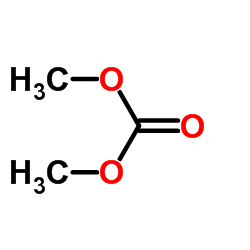 CAS#:616-38-6
CAS#:616-38-6 CAS#:67-56-1
CAS#:67-56-1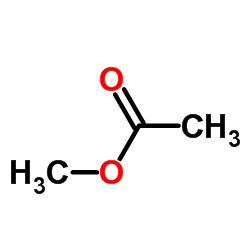 CAS#:79-20-9
CAS#:79-20-9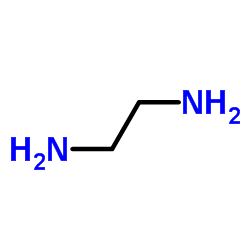 CAS#:107-15-3
CAS#:107-15-3 CAS#:24134-09-6
CAS#:24134-09-6 CAS#:122676-65-7
CAS#:122676-65-7![1H-Imidazole, 1-methyl-2-[(trimethylsilyl)methyl] Structure](https://image.chemsrc.com/caspic/279/91631-71-9.png) CAS#:91631-71-9
CAS#:91631-71-9 CAS#:694-48-4
CAS#:694-48-4 CAS#:108203-70-9
CAS#:108203-70-9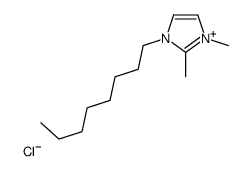 CAS#:1007398-58-4
CAS#:1007398-58-4 CAS#:13230-04-1
CAS#:13230-04-1 CAS#:402846-78-0
CAS#:402846-78-0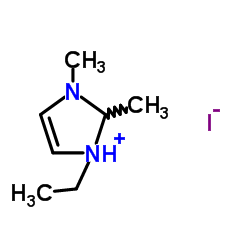 CAS#:141085-40-7
CAS#:141085-40-7 CAS#:79080-38-9
CAS#:79080-38-9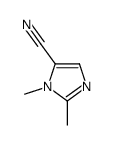 CAS#:19225-94-6
CAS#:19225-94-6 CAS#:75-18-3
CAS#:75-18-3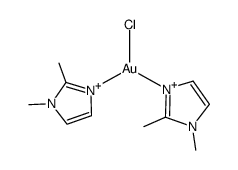 CAS#:81196-80-7
CAS#:81196-80-7
